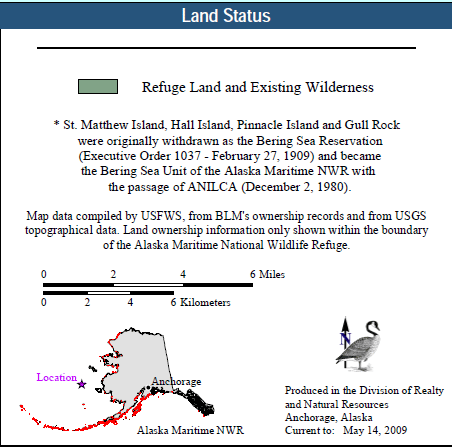



Maps above courtesy of Alaska Maritime NWR.
| St. Matthew Island DXpedition IOTA NA-232 St. Matthew Island Group KL7RRC July 22-25th, 2011 |
RRC Dxpeditions Tel (800)977-0448
11410 NE 124th ST STE 343
Kirkland, WA 98034 USA email: N3QQ at NA-234.com
11410 NE 124th ST STE 343
Kirkland, WA 98034 USA email: N3QQ at NA-234.com
and Ramon AL7X for his hospitality in Nome. Working now on QSL design. Check if you
had a contact with us:
July 28 2011
Due to stormy seas, no landing to NA-210 is possible, based on the experience of
captain David VP8DEU. This is sad but NA-210 is cancelled. The team is in Nome now.
July 27 2011
At the time of 03:55z - 27 Jul 2011 team is passing by St Lawrence Island (NA-040) but
there no operation from there is planned.
After the very successful first time ever activation of NA-232 IOTA New One - St Matthew
Island with 2 operating places and 3630 QSOs in the log, the next target of the team is
NA-210 Sledge Island (Group Name: Nome County Centre group, Claimed by: 7.4% of
IOTA participants).
Approximately (depending on weather and landing conditions), they plan to start the
operation from the 28th of July for 24 hours.
All the best to all hunters!
July 22 2011
KL7RRC hit the air at 0414z from NA-232 IOTA New One! Good signal in EU! Good
hunting for IOTA Chasers!
July 17 2011
David Scott Cowper VP8DEU joined our expedition and we are traveling with him on
board his vessel Polar Bound to St. Matthew leaving Dutch Harbor Monday, July 18th
around noon local time.
Polar Bound tied up to Lady Gudny in Dutch Harbor July 17, 2011.
Yuri N3QQ/KL7 in front of Polar Bound (target is NA-232 - July 2011) and Lady Gudny
(foreground, NA-234 in Jul 2008)
May 21, 2011 Official permission is received from US FWS
From Wikipedia, St. Matthew Island
Geography
Location Bering Sea
Coordinates 60°24′31″N 172°43′12″W / 60.40861°N 172.72°W / 60.40861; -172.72
Area 137.857 sq mi (357.048 km2)
Highest elevation 1,476 ft (449.9 m)
Country USA
State Alaska
Demographics Population 0
St. Matthew Island is a remote island in the Bering Sea in Alaska, 295 km (183 miles)
WNW of Nunivak Island. The island has a land area of 137.857 sq mi (357.049 km²),
making it the 43rd largest island in the United States. Its most southerly point is Cape
Upright which features cliff faces which exceed 1000 feet (300 m). The highest point on
the island is 1476 ft. (450 m) above sea level.
From L to R: Yuri UA9OBA, David VP8DEU, Alexandra - News Reporter from Dutch
Harbor, Tim NL8F
Alexandra's interview before our trip
The entire island's natural scenery and wildlife is protected as it is part of the Bering
Sea unit of the Alaska Maritime National Wildlife Refuge.
The United States Coast Guard maintained a manned LORAN station on the island
during the 1940s.
Human habitation In prehistory, the island was inhabited by members of the Aleut tribe.
The first recorded attempt at settlement occurred in 1809, when a Russian group led by
Demid Ilyich Kulikalov, under the guise of the Russian-American Company, established
an experimental outpost.
Mammals Presently, arctic foxes and insular voles are the only mammals resident on
the island, though polar bears occasionally visit via pack ice. St. Matthew Island, in fact,
represents the southern limit of the North American range of polar bears.
In 1944, 29 reindeer were introduced to the island by the United States Coast Guard to
provide an emergency food source. The coast guard abandoned the island a few years
later, leaving the reindeer. Subsequently, the reindeer population rose to about 6,000 by
1963 and then died off in the next two years to 43 animals.
A scientific study attributed the population crash to the limited food supply in interaction
with climatic factors (the winter of 1963-64 was exceptionally severe in the region). By
the 1980s, the reindeer population had completely died out Garrett Hardin cited the
"natural experiment" of St. Matthew Island of the reindeer population explosion and
collapse as a paradigmatic example of the consequences of overpopulation in his
essay An Ecolate View of the Human Predicament



Past Club Expeditions
to Alaska:
to Alaska:
Past Club Expeditions
Worldwide
Worldwide



